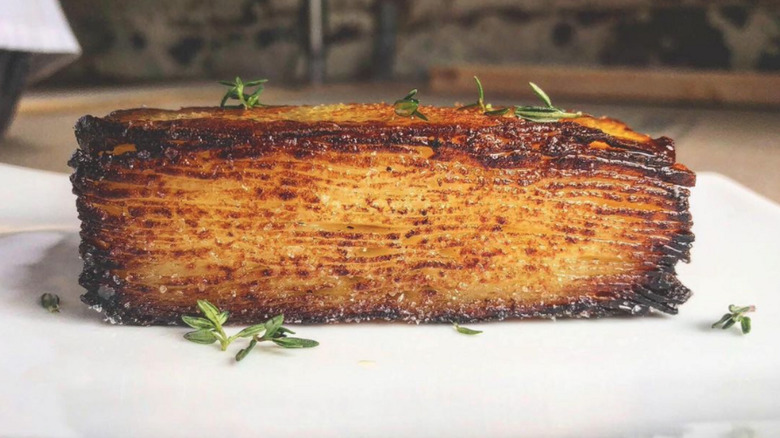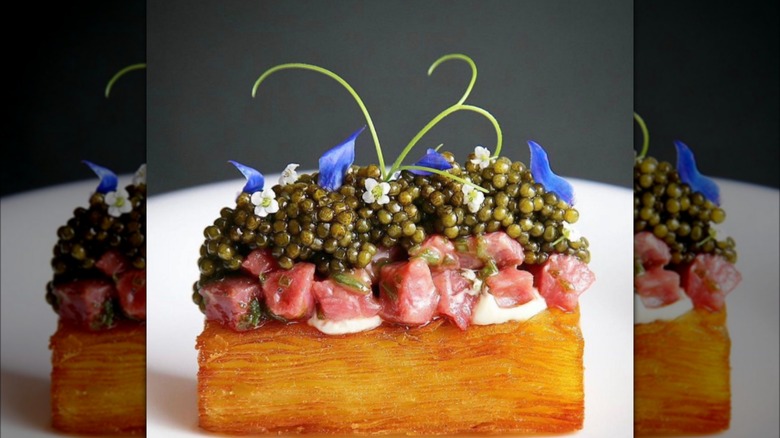For A More Elevated Take On Scalloped Potatoes, Try The Pavé Method
Quite often, the most exquisite dishes emerge from the fewest ingredients. Such is manifestly the case with potatoes pavé, a simple recipe that does for scalloped potatoes what the Kouign-Amann did for pastry dough: produce a dense, layered, buttery, and crisp result. Because a basic pavé only calls for potatoes, butter, and cream, you should make sure you have the highest quality ingredients on hand. And as decadent as this dish is, it shouldn't surprise you that its preparation also requires that cheap but hard-to-spare ingredient, time.
While most think what makes potatoes au gratin a gratin is the addition of cheese, the term actually refers to the browned crust that forms on the top of certain dishes. While some recipes call for a bit of parmesan, its inclusion isn't necessary, and a traditional pavé is more of a relative to scalloped potatoes. The potatoes are thinly sliced and compressed in a loaf pan using a weight to densely mold these delicate layers, to form a kind of terrine.
Is it done when it emerges from the oven? Not quite! It's after an initial bake that it's weighed down for several hours or overnight. Once it's packed tight, the pavé is sliced into little rectangular blocks, (hence the name, which means cobblestone), and fried in a blend of oil and butter. The result is denser and crisper than scalloped potatoes while still being every bit as velvety in the middle.
The pavé way
Potatoes pavé are little more than scalloped potatoes with some French flair and technique. In the U.S., the dish was popularized by chef and restaurateur Thomas Keller, who realized that you could fry cold scalloped potatoes until crisp in the same way Southerners make grits croquettes (and, yes, those are also amazing). Pavé is open to some variation, but we recommend skipping the cheese to distinguish it from a typical au gratin.
To prep, line a loaf pan with parchment paper and brush it with butter. Coat every potato with your seasoned cream and neatly line the pan with them, remembering to season and pop small cubes of butter between each layer. When you near the top of the pan, fold over your baking paper flaps and bake.
While still warm, place another loaf pan on top and use some cans from the pantry as weights until the terrine has cooled, then refrigerate for up to two days. When you're ready to fry, remove the terrine, cut it into squares, and bathe it in oil and butter until crisp and brown. If you like, you can rub the parchment paper lining with garlic (like a Dauphinoise) or add a pinch of nutmeg to the cream. When frying your pavé, you might also want to add garlic cloves and fresh thyme to the fat. Frankly, you'll have time to try all kinds of variations because we're confident you'll be making potatoes pavé for years to come.

